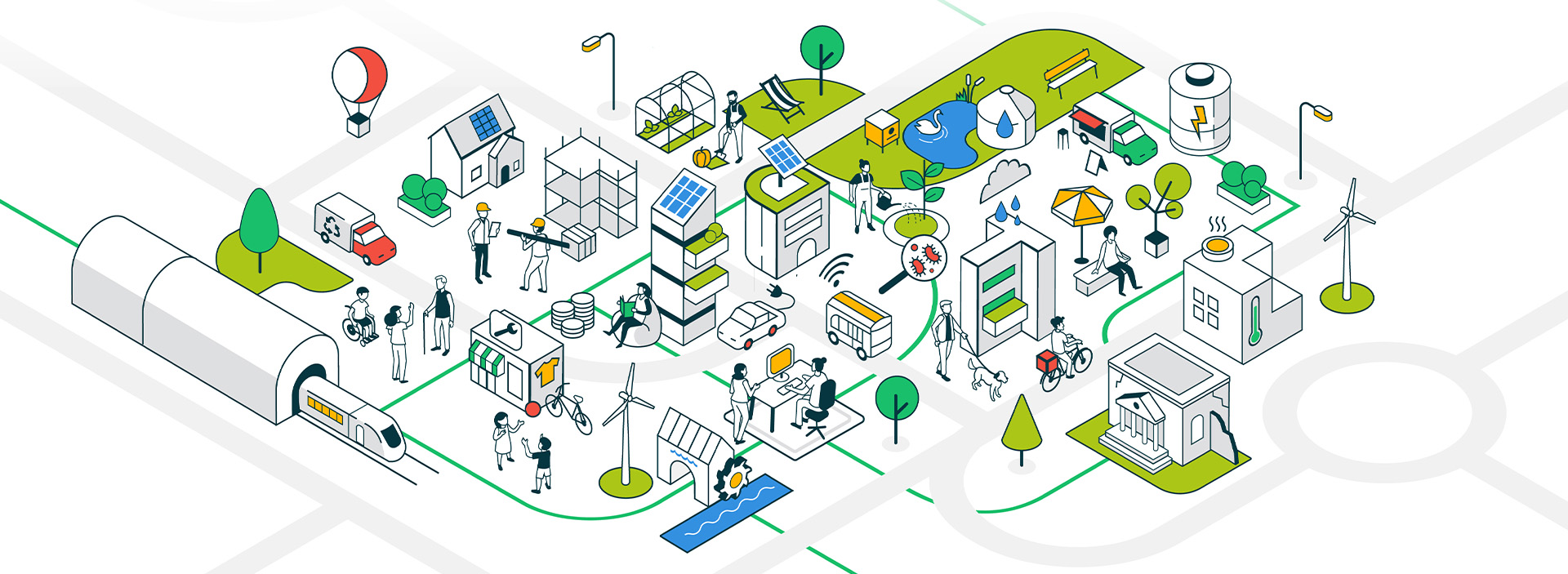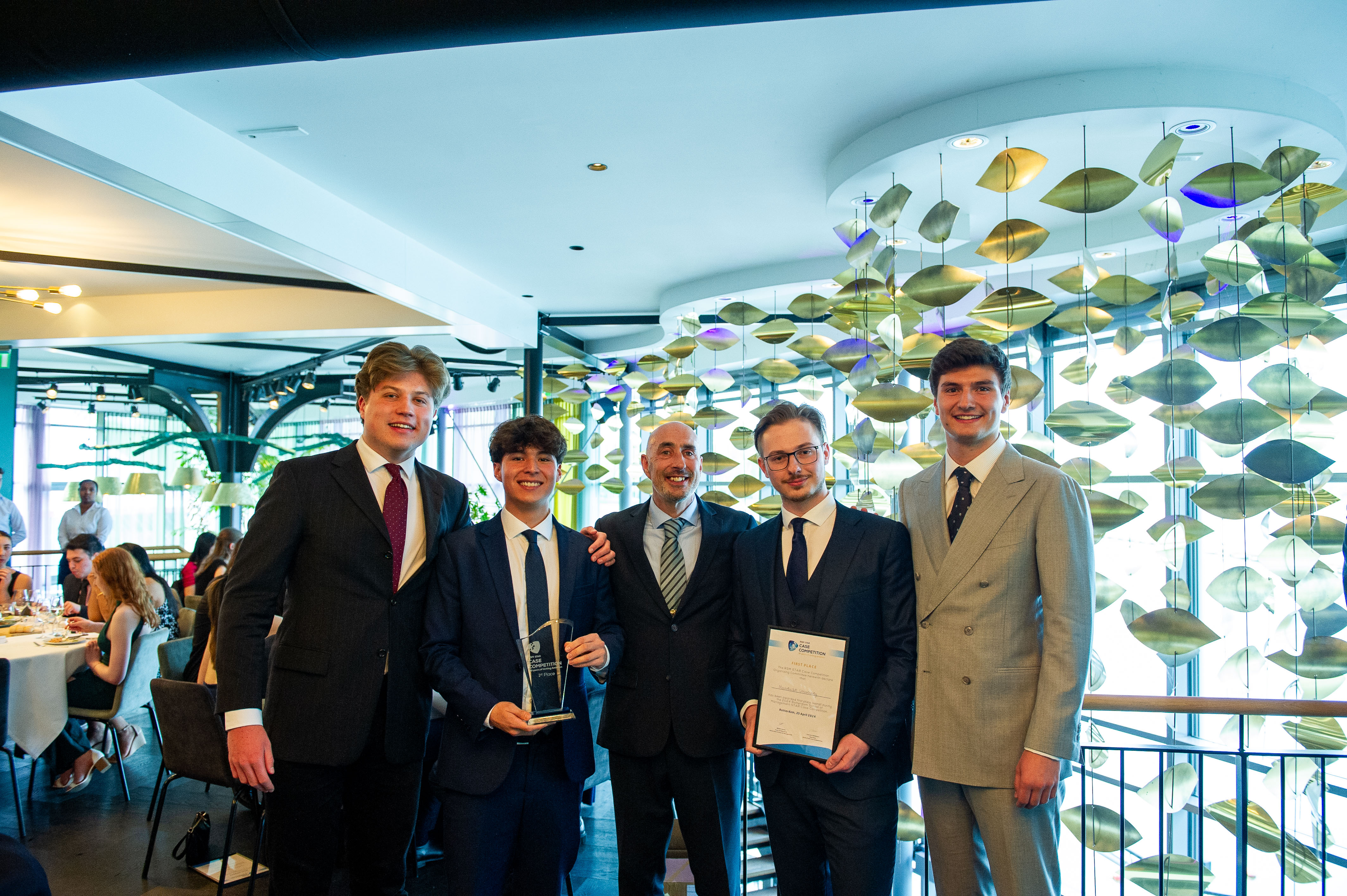Sustainable work in times of change: a Positive Health approach
How can we help employees to fulfil their potential? And how can we do this in a way that is sustainable for both employees and organizations? Recently, I started a new professorship at the Research Centre for Education and the Labour Market (ROA) at SBE to address these questions, together with various stakeholders in science, policy, and practice. In this blog, I describe why these questions are important, and how a Positive Health approach can help us to answer them.
The search for common ground in a rapidly changing labour market
Organizations face several serious challenges. Absenteeism is high, and there are significant personnel shortages, which will only continue to increase in various sectors. Furthermore, the changes that organizations are rapidly facing, such as automation, financial and political instability, and the aftermath of a pandemic, make great demands on the adaptability of employers and employees alike. Many employees experience low autonomy in their work, and say that their work feels mentally and emotionally demanding. Almost half of workers in the Netherlands say that additional measures are needed to reduce work pressure and stress. Furthermore, about a third say they need guidance or coaching to deal with changes in the work environment, and over a quarter say they are not involved in these changes by their employer.
Developments among young people are particularly concerning. As many as a quarter of employees between the ages of 18 and 34 in the Netherlands struggle with burnout complaints. In addition to uncertainty, young people also experience performance pressure, with staff shortages making it even more difficult to say "no”. Many young employees therefore struggle with work-life balance, which reinforces the feeling that they are not doing enough on all fronts. This also raises questions about meaning: what do I hope to achieve and contribute, in my work and in my life?
The main question is what employers and employees can do together to help employees achieve their full potential, and to ensure that people can thrive even in times of challenge and change. Such a joint approach is certainly not impossible: of course employees and employers have their own interests, but there is also a clear common interest, for example in increasing engagement, keeping work sustainable, and making the most of people’s talents and skills. And this is exactly where Positive Health offers a promising starting point.

This blog is written by Tim Huijts, Full Professor of Positive Health at Work at the Research Centre for Education and the Labour Market (ROA) at Maastricht University. In his research, Tim Huijts combines three research lines, focusing on: (1) monitoring, explaining and diminishing social inequalities in health; (2) the ability of the concept of Positive Health to help people fulfil their potential in work and learning; and (3) skills and capabilities.
His work has appeared in a broad range of journals in Sociology, Demography, Social Epidemiology, and Public Health. In the United Kingdom, his research was recognized with a prestigious Philip Leverhulme Prize (2017) for outstanding achievement and exceptional promise.
What is Positive Health?
Positive Health is a broader view of health, in which health is seen as people's ability to cope with physical, emotional and social life challenges, and to use self-management as much as possible. This involves more than just people's physical and mental health. Six dimensions are central: bodily functions, mental well-being, meaningfulness, quality of life, participation, and daily functioning. This view of health was developed by Machteld Huber, a physician who herself became seriously ill and noticed that health is much more than the absence of disease. Positive Health responds to this by focusing on what people can still do. To this end Huber, together with health care providers and patients among others, developed a method to apply Positive Health in practice, and to offer concrete perspectives for action. This method is mainly used in health care practice, for example by general practitioners. It centers on the use of a conversation instrument. It works like this: first, a patient fills out a questionnaire about the six dimensions of Positive Health. The scores on the six dimensions are displayed in a "spider web" diagram. This spider web then forms the basis for a conversation between the care provider and the patient, in which the patient's condition is discussed, looking at all six dimensions of health, as well as the relationship between these dimensions. On the basis of this conversation, possible actions are identified to improve the situation, focusing on what the patients themselves can do.
By now, Positive Health is widely used by healthcare providers and other stakeholders in healthcare, such as policy makers. Positive Health is partly seen as a strategy for preventing health problems and reducing the use of care. After all, there is an urgent need for this: partly due to an aging population and an increase in the number of people with chronic diseases, healthcare costs will only continue to rise in the coming years, and the healthcare sector is under great pressure.
How can we apply Positive Health in the work environment?
So Positive Health is already being used for patients and clients, but couldn't it also be applied to employees? This question is increasingly being asked; in healthcare, but also in other sectors. For example, employers are asking whether Positive Health can help employees to stay healthy, call in sick less and drop out less often. In some organizations, Positive Health is completely integrated into personnel policy and leadership visions. Many other organizations only offer workshops or short courses. There are still many questions about how Positive Health can be used in an evidence-based way. This is not surprising: although there are manuals for the use of Positive Health in the workplace, largely based on practical experience, there is still almost no research on Positive Health and work.
The main challenge is that Positive Health certainly does not work exactly the same in the workplace as it does in healthcare practice. A conversation between a patient and a healthcare provider is really different from a conversation between an employee and a supervisor or HR person, where there is usually a hierarchical relationship. Additionally, we know that the social environment is incredibly important to the success of this type of approach. Work environments differ greatly from one another, and so the way Positive Health is best deployed may also differ between organizations. Furthermore, in the context of work, it is not always clear what the ultimate goal of working with Positive Health is. Employers need clarity about this, but also do not always have a clear idea of what they would like to achieve with it. Is it mainly about promoting the health and well-being of employees? Or is it about reducing absenteeism? Often it is also about other things, such as increasing job satisfaction or commitment, but this is not explicitly mentioned. Also for employees it is not always clear what the goal of working with Positive Health is, and too strong a focus on health gains can even create resistance among employees. Finally, it is not clear whether different target groups benefit in the same way from working with Positive Health. Initiatives around Positive Health and work usually focus on people who are already working, but can they also be used for people who are struggling to find work?
A new co-creation program on Positive Health at Work
In short, it is high time to properly explore how we can translate Positive Health to the context of work. Within my chair, I have therefore set up a co-creation program around Positive Health at Work, in which we do this together with organizations. We will focus on answering four questions. Firstly, under what circumstances does can Positive Health be implemented effectively (e.g., what is the role of the organizational structure and culture)? Secondly, how does the implementation of Positive Health take shape exactly (e.g., are people from all layers in the organization involved, and in which ways)? Thirdly, what does it work for (e.g., reducing absenteeism, but also talent development and adaptability)? And fourthly, for whom does it work (e.g., do people with a disability also experience fewer barriers in organizations that work with Positive Health)?
How are we going to answer these questions? We perform context analyses, we evaluate the approach in organizations that already work with Positive Health, we ensure further development of the approach, and we advise organizations that do not yet work with Positive Health in the evidence-based design of a new approach. We use a combination of quantitative and qualitative research methods from different scientific disciplines, such as insider econometrics. We draw on existing research on health, work and resilience, and on different theoretical traditions, such as the capability approach, the job demands-resources model, and the complex systems perspective. By involving more and more different organizations in our research, we can make increasingly concrete recommendations in the process. Ultimately, this will also help us learn what core elements are really needed to successfully deploy Positive Health in the workplace.
Positive Health for a human-proof future of work
The future of work is not only about sustainable employment and employability, but also about the sustainable use and development of people’s potential of talents and skills. A Positive Health approach is a promising starting point for developing solutions in this area. By helping people to make the most of their potential in a sustainable way, we not only ensure that people are future-proof, but also that the future remains human-proof.
Also read
-
Maastricht Sustainability Institute (MSI) of Maastricht University School of Business and Economics (SBE) has successfully applied for funding in the ‘Driving Urban Transitions’ program of NWO/ JPI Urban Europe. Three new transdisciplinary projects with international partners have recently started...
-
SBE took first place in the Rotterdam School of Management Star Case Competition (RSMCC). The competition welcomed 16 top-level international business teams of four students, who were tasked with tackling two real-life business cases.
-
Higher air pollution increases the likelihood of people voting for opposition parties rather than ruling parties. This is the major finding of research by Nico Pestel, a scientist at the Research Centre for Education & Labour Market (ROA) at the Maastricht School of Business and Economics.


